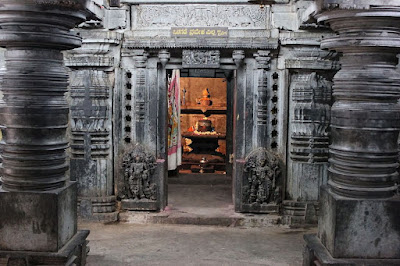The inner Sanctum Sanctorum of the temple is alternatively referred to as the garbhagriha. The garbhagriha is derived from the Sanskrit words garbha, meaning womb, and griha, meaning house. While commonly associated with Hindu temples, this term is also utilized in Jain and Buddhist temples.
What is Garbhagriha of a Hindu Temple
The garbhagriha serves as the sacred space where the primary murti, or statue, of the temple is housed. It embodies a tangible representation of divinity. When the garbhagriha is constructed with precise proportions, the inner space resonates with a distinct rhythm or harmony.
The entry to garbhagriha has traditionally been limited to priests who carry out religious ceremonies there. However, in temples that are actively used for worship, access is at least restricted to individuals of the Hindu faith.
All Hindu temples are constructed similar to a human body. The Garbhagriha, or inner sanctum, is likened to a womb where the deity's form is brought to life through precise rituals, consistent worship, and sacredness. It is crucial for the Garbhagriha of a temple to be constructed in accordance with the appropriate measurements and architectural principles of Devalaya Vastu. The size of the idol is also determined based on proportional measures, and there exist comprehensive guidelines in this regard.
 |
| Garbhagriha of Hindu Temple or Sreekovil |
Garbhagriha in other Languages
In the Tamil language, the innermost part of the sanctum sanctorum is referred to as karuvarai, which translates to "womb chamber". This term is derived from the combination of the words "karu", meaning foetus, and "arai", meaning a room.
In Kerala, garbhagriha is known as Sreekovil.
Comments
Post a Comment